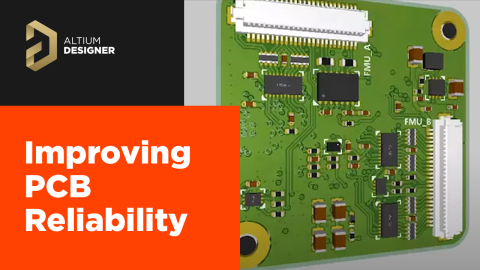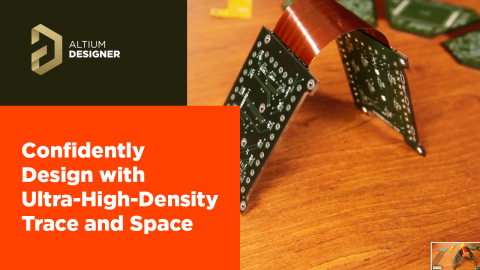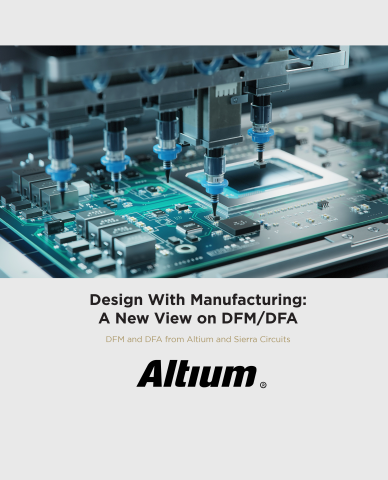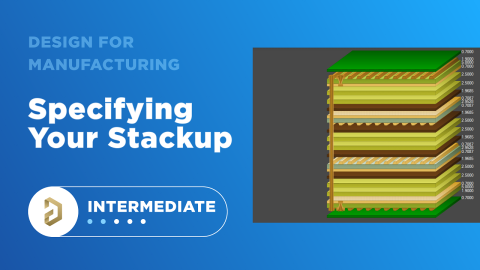DFM/DFA Requirements in Systems Engineering

As discussed in the previous article, when designing a PCB, it is essential to consider a set of technical requirements related to functionality, power consumption, size, electromagnetic compatibility, etc. However, the manufacturability and assembly requirements are equally important. Designing a high-performance circuit, meeting all functional specifications or regulatory requirements would be futile if the design is not manufacturable or if it encounters assembly issues that could increase production costs or, in the worst-case scenario, render the product unviable.
In this article, we will focus on how to approach requirements management to ensure a design is manufacturable and can be assembled. Specifically, we will discuss how to integrate CAD and CAM within the management system, considering not only the technical requirements outlined in the previous article but also the factors that influence the fabrication and assembly of a circuit (such as trace widths, spacing, drilling, masks, component placement, etc.).
Introduction to DFM/DFA
Both PCB manufacturers and assemblers require that the designed circuits be manufacturable and capable of being assembled, respectively. This highlights the need to follow specific design rules or guidelines that consider the various stages and technologies used in PCB manufacturing and the different assembly techniques, ensuring the product is both manufacturable and can be assembled. This necessity gives rise to the concepts of DFM (Design for Manufacturability) and DFA (Design for Assembly).
- DFM, or Design For Manufacturing, is the set of processes, rules, and guidelines that must be followed during the design phase to ensure that a printed circuit board (PCB) can be manufactured using current manufacturing technologies and limitations.
- Similarly, DFA, or Design For Assembly, is the set of processes, rules, and guidelines that must be followed during the design phase to ensure that a printed circuit board (PCB) can be assembled using current assembly technologies and limitations.
When creating a design, we must consider the following questions:
- Can the PCB we are designing be manufactured?
- Could it have been designed differently to optimize costs?
- Can it be assembled using automated processes?
- Does it require manual or complex processes that increase costs?
- Are there stock issues?
All of these questions can be addressed through the concepts of DFM and DFA. Although there are no mandatory regulations, designing a circuit with basic manufacturability rules is essential to ensure the design is manufacturable. Otherwise, we may encounter unpleasant surprises once we send the manufacturing documentation to the selected manufacturer. The same applies to design rules aimed at the assembly of the electronic board. If proper design guidelines for feasible automated assembly are not followed, we will face significant production issues, requiring manual and complex processes that will increase the cost of assembling the electronic board.
It is important to note that each manufacturer has different capabilities based on the processes and machinery they use. Therefore, we can say that DFM/DFA are manufacturer-dependent. Example: A manufacturer with capabilities to fabricate a 8 layers PCB cannot fabricate a 12 layers PCB due to its manufacturing capabilities.
As designs become more complex (with more layers, higher density, smaller trace widths and separations, smaller drill diameters, blind or buried vias, etc.), DFM becomes increasingly complex. As a result, there are more design rules to consider, and it becomes more critical to comply with these rules to ensure that a PCB can be manufactured.
Therefore, the objectives of DFM/DFA are:
- Define processes, rules, and design guidelines.
- Ensure that the design is manufacturable and can be assembled.
To simplify all of this, the Institute of Printed Circuits (IPC) was established in 1957 and developed the IPC standard, which assists designers and manufacturers in the task of creating manufacturable designs. IPC standards consider the various manufacturing technologies and limitations, and different documents have been created based on these, addressing various design areas. The IPC standards tree is shown at the following link.
While the IPC standard would deserve its own article due to the large number of rules it encompasses, it is worth highlighting that there is a set of rules for designing rigid, flexible, and rigid-flex PCBs (IPC-21xx, IPC-22xx, IPC-26xx), as well as a set of rules related to design for assembly (IPC-D-279, IPC-D-326, IPC-7351).
Cohesion Between CAD/CAM and DFM/DFA
CAD and CAM refer to Computer-Aided Design and Computer-Aided Manufacturing processes, respectively.
Just as designers use CAD tools (ECAD in the case of electronic engineers), such as Altium Designer, manufacturers use other tools that assist them in PCB manufacturing, assembly, and related processes, known as CAM software. Examples include CircuitCAM8 or any specific software integrated into an automatic assembly machine (Pick & Place).
From the design process (CAD) perspective, engineers, based on DFM/DFA guidelines, input rules into the design tool (e.g., using Altium's Constraint Manager) and then verify compliance with these rules (DRC – Design Rules Check).
Once the design is complete and verified to meet all the necessary rules for manufacturability and assembly, it is sent to the manufacturer. Using different tools (CAM), the manufacturer can check all the PCB fabrication parameters and detect if any values are out of tolerance and need modification to ensure reliable manufacturing. Similarly, PCB assemblers analyze the designed circuit and check if any potential issues might arise during the assembly stage before proceeding with the assembly.
So, the question arises: What parameters are checked to determine if a PCB is manufacturable and can be assembled? Or, put another way, what rules should be followed to ensure my design is both manufacturable and can be assembled?
Example DFM/DFA Requirements
Once all functional requirements, system and subsystem requirements, customer requirements, etc., are defined, we must define the DFM/DFA requirements. In other words, we need to consider these requirements before starting the design to ensure our design can be manufactured without surprises or issues.
Although the list of parameters to consider may be extensive and largely depends on each manufacturer and their manufacturing capabilities, a summary of the necessary requirements to define could be as follows.
Examples of DFM requirements
- REQ-DFM-01: Minimum Plated Hole Diameter.
- REQ-DFM-02: Minimum Non-Plated Hole Diameter.
- REQ-DFM-03: Aspect Ratio.
- REQ-DFM-04: Minimum Trace width / Clearance (Outer Layers).
- REQ-DFM-05: Minimum Trace width / Clearance (Inner Layers).
- REQ-DFM-06: Minimum annular ring (Outer Layers).
- REQ-DFM-07: Minimum annular ring (Inner Layers).
- REQ-DFM-08: Minimum Microvia Diameter.
- REQ-DFM-09: Minimum Microvia Spacing.
- REQ-DFM-10: Minimum Spacing Between Microvias of Different Levels (Staggered Vias).
- REQ-DFM-11: Microvia Filling.
- REQ-DFM-12: PCB Thickness and Stack Up (examples of 6, 8, and 10 Layers)



- REQ-DFM-13: Types of vias.

- REQ-DFM-14: Definition of impedances Single-Ended traces.
- REQ-DFM-15: Definition of Differential Pair Impedance traces.
- REQ-DFM-16: Definition of Back Drilling if necessary.
- REQ-DFM-17: Solder Mask Clearances (especially in very small pads, i.e. BGAs)
- REQ-DFM-18: SilkScreen Clearances.
- REQ-DFM-19: SilkScreen sizes.
Examples of DFA Requirements
- REQ-DFA-01: Single or Doble-sided assembly and mounting technology.

- REQ-DFA-02: Standardization and unification of components.
- REQ-DFA-03: Component Clearances.
- REQ-DFA-04: Component heights.
- REQ-DFA-05: Distance between components and PCB border.
- REQ-DFA-06: PCB bands for conveyors.

- REQ-DFA-07: Fiducials (Size, position, and quantity for side).

- REQ-DFA-08: Paste Mask (opening and reductions).
- REQ-DFA-09: Through-hole solder technology (wave, selective, manual).
Once a design is completed and has met the requirements mentioned above, the first step is the DRC analysis using the Design Rule Check tool. This tool checks all the parameters we have defined in the rules against what has been designed and provides a report of any parameters that have not been followed. This tool can be kept active throughout the entire design phase (DRC Online) so that Altium notifies us in real-time if any rule is being violated.
When the DRC shows zero errors, we will be ready to generate the necessary documentation to send to the PCB manufacturer and assembler.
- Gerber files
- Drilling files
- ODB++ files
- Bill Of Materials (with the alternative for critical components)
- Component coordinate (XY) files for Pick & Place machine
- Assembly drawings (Draftsman files) in PDF
- Inspection, Test, and Programming procedures, if needed
- Special Assembly Instructions (heatsink assembly, coating dispensing, or whatever if needed)
If we have met all the design requirements related to DFM and DFA, passed the DRC with zero errors, and sent the manufacturer all the necessary documentation for the fabrication and assembly of our board, we will have significantly reduced uncertainty in case of functional failures during the validation phase of our design. This will allow us to rule out manufacturing and/or assembly issues, enabling us to focus exclusively on analyzing the designed circuit.
Key Takeaways
The Importance of Designing with DFM/DFA in Mind
PCB designers must remember that what they are drawing on a computer must eventually be brought to life in the real world. Paper (or, in this case, the computer) can accommodate anything, but the reality is quite different. Therefore, it is crucial to design while considering the capabilities and manufacturing processes of a PCB and PCBA.
The Need to Treat DFM/DFA as Design Requirements from the Start
It is essential to treat DFM/DFA requirements as an additional set of criteria, just as important as functional or system requirements. Failing to account for these from the beginning of the project can lead to delays and cost overruns that could jeopardize the success of the project.
Engage with Manufacturers Before Starting the Design
Building on the previous point, it is highly recommended (if not mandatory) to communicate with manufacturers and, if possible, select the manufacturer before beginning the design process. This ensures a thorough understanding of their capabilities and materials, allows for verification of impedance calculations, etc. Addressing these issues during or after the design phase may lead to unpleasant surprises.
Give Due Importance to the DRC (Design Rules Check)
Do not underestimate the importance of the DRC tool (Design Rules Check). This is the first step after completing the PCB design to verify whether it meets the DFM/DFA requirements set at the beginning and serves as the first level of assurance that the design is manufacturable.
The Manufacturer Requires Comprehensive Documentation
At the conclusion of the design, it is essential to create high-quality documentation that contains all the necessary files for building the PCB and, if possible, includes all assembly instructions and any other additional details required for the proper manufacturing and assembly of the board. Likewise, if required, the documentation should include the various inspection, testing, and programming processes.
Ensuring Success Through DFM/DFA Integration in PCB Design
Designing a PCB is more than meeting functional requirements. You need to ensure that the design can be successfully manufactured and assembled with minimal risks and costs. By integrating Design for Manufacturability (DFM) and Design for Assembly (DFA) principles from the very beginning, designers can significantly reduce production issues, delays, and unforeseen costs that might otherwise jeopardize the project.












 Back
Back